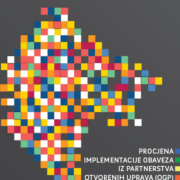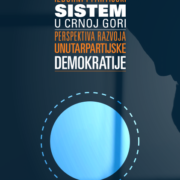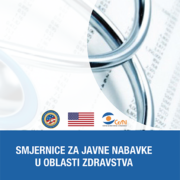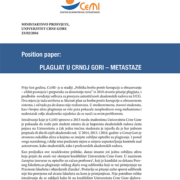Comparative Balkan Politics shall consider all manuscripts that meet the following criteria:
- The manuscript has to be an original work of the author, and it must not duplicate any previously published work, including the authors’ own previous publications.
- The manuscript must not be under consideration or peer review or in the process of being published elsewhere.
- The manuscript is written as a research article, review article, electoral note, policy note, or is part of a previously defined special section.
Any author who does not adhere to these criteria will have their manuscript rejected or retracted.
All articles published in Comparative Balkan Politics are Open Access under a Creative Commons Attribution-Non-Commercial-NoDerivs License (CC BY NC ND). Copyright is retained by the author(s) and the author(s) grant CeMI a license to publish the article and identify itself as the original publisher. Authors also grant any third party the right to use the article freely as long as it is not used for commercial purposes, its integrity is maintained and its original authors, citation details and publisher are identified.
CONTENTS
1. General guidelines
2. Journal style
-
- Article Style
- Referencing Style
3. Figures
4. Acknowledgements and reproduction of copyright material
5. Manuscript submission
6. Publication and authors’ rights
1. GENERAL GUIDELINES
- Manuscripts are accepted in English language. Any consistent spelling and punctuation styles may be used. It is the responsibility of the authors to ensure that the articles are readable, understandable, and that grammatical and syntax problems are kept to a minimum. Only light copyediting services are offered prior to publication.
- Manuscripts of research articles should typically be between 6000 and 8000 words, including references, tables, captions and footnotes. Authors should include a word count on the front page of their manuscript.
- Manuscripts of research articles should include the following elements in the given order: 1) title page, 2) abstract, 3) keywords, 4) main text, 5) acknowledgements (if applicable), 6) references, 7) appendices (if applicable). All elements should be compiled as a single document file.
- The title page includes: 1) the title of the article, 2) author(s) names, 3) institutional affiliations of the author(s) along with email addresses, 4) postal address and telephone numbers of the corresponding author. Only the institutional affiliations and email addresses of the author(s) will be included in the journal article. No biographical notes are required.
- If the manuscript has been written by more than one author, it is the responsibility of the authors to agree on the order of names, as well as to identify one author as the corresponding author. All communication from the Editorial Board will only be with the corresponding author. All co-authors will be required to co-sign the authorship agreement prior to publication.
- Abstracts should be of 120 words or less.
- Immediately after the abstract, provide a maximum of 6 keywords.
- Footnotes should be used sparingly. All footnotes should be numbered consecutively with Arabic numbering (do not use Roman numerals).
- Provide all details required by any funding source or grant-awarding body as an Acknowledgement.
- Authors are encouraged to submit supplemental material as appendices to the manuscript. Appendices are accepted as Word, Excel, PDF and image files.
- Manuscripts of review articles should typical be between 3000 and 4000 words. Review articles include: 1) title page, 2) main text, 3) acknowledgements (if applicable), 4) references. Above listed guidelines related to these elements apply.
- Electoral notes and policy notes should typically be between 2000 and 3000 words, but longer comparative pieces are also accepted. Electoral notes and policy notes include: 1) title page, 2) main text, 3) acknowledgements (if applicable), 4) references, 5) appendices (if applicable). Above listed guidelines related to these elements apply.
- All manuscripts undergo rigorous peer review, based on initial editor screening and refereeing by at least two anonymous referees. Referee recommendations and high academic standards are the final criteria of judgment for inclusion in the journal.
2. JOURNAL STYLE
Article style
- Title: Title Case: Title Case after Colon(Times New Roman, 14pt, bold, aligned left)
- Authors: AN AUTHOR & ANOTHER AUTHOR (full name: JOHN SMITH, Times New Roman, 12pt, upper case, aligned left)
- Affiliation: Affiliation name, Country(below author names, Sentence case, Times New Roman, 12pt, italic, aligned left)
- Abstract: ABSTRACT: then text in smaller case(no indentation, Times New Roman, 10pt, justified)
- Keywords: Keyword; Another keyword (no indentation, Times New Roman, 10pt, justified)
- Correspondence details: Email: aaaa@bbb.cc (given as footnote on page 1, format of footnote)
- Headings: Main heading: Title Case Bold; Subheading: Title Case Italic; Sub-subheading: Sentence case italic(Times New Roman, 12pt, aligned left). Titles of section headings should be concise. Sections are not numbered.
- Paragraphs: Indented
- Main text: Times New Roman, 12pt, justified
- Footnotes: Times New Roman, 10pt, justified
- Tables: Table 1. Title initial cap only (Times New Roman, 12pt, centered above table); Note: This is a note. (Times New Roman, 10pt, italic, aligned left under table); (Table 1) mentioned in text.
- All tables must be numbered in the order in which they appear in the manuscript (Table 1, Table 2).
- Figures: Figure 1. Title initial cap only (Times New Roman, 12pt, centered above table); Note: This is a note. (Times New Roman, 10pt, italic, aligned left under table); (Figure 1) mentioned in text.
- All figures must be numbered in the order in which they appear in the manuscript (Figure 1, Figure 2).
- Equations: Centred; Equation (1) mentioned in text
- Quotes and quotation marks: Double quotes, single within
- Numbers, units, and dates: spell out one to nine, then 10, 1000, 10000; 2 January 2015; in the twenty-first century; in the 1990s.
- The entire manuscript (including references and footnotes) is adjusted to 1.5 line spacing.
- The article style also applies to review articles, electoral notes and policy notes.
Referencing style
- CBP uses APA (American Psychological Association) reference style. For more details please refer to: American Psychological Association. (2010). Publication manual of the American Psychological Association (6th ed.).
- References are cited in the text by the author’s surname, the publication date of the work cited, and a page number if necessary. Full details are given in the reference list. Place them at the appropriate point in the text.
- In text references: Use the author-date method of citation for quotations and paraphrasing. Examples: (Jones, 2000); (Jones, 2000, p.11); (Jones, 2000, pp.11-22); Author Jones mentioned in text (2000, p.11); Two authors: (Jones & Turner, 2000, p.11); Multiple references sorted alphabetically: (Jones, 2000; Wright, 2002, p.11-22); Organization as author: (European Union, 2000).
- If an author has published two works in the same year put a, b, c after the year: (Jones, 2000a, 2000b).
- Secondary source: (Jones, 2000, as cited in Wright, 2002).
- Do not use footnotes or endnotes for citing references in text. Footnotes should be kept to a minimum, endnotes should not ne used.
- All references mentioned in the text are listed in alphabetical order (by surname of first author) in the reference list. References from the same author(s) are ordered by date, from oldest to most recent. Reference examples for the most widely used sources are given below. For other sources please refer to the APA manual.
- Book: One author: Author, A. A. (2012). This is a book title: And subtitle. Sarajevo: Academic Press.
- Book: Several authors: Author, A. A., Author, B. B., & Author, C. C. (2012). This is a book title: And subtitle. Sarajevo: Academic Press.
- Edited book: Editor, J. J., Editor, A. A., & Editor, P. P. (Eds.). (2012). Book title: And subtitle. Sarajevo: Academic Press.
- Chapter in an edited book: Author, A. A. (2012). This is a chapter. In J. J. Editor & B. B. Editor (Eds.), Book title: And subtitle (pp. 300−316). Sarajevo: Academic Press.
- Book: Group authors: American Psychological Association. (2003). Book title: And subtitle. Sarajevo: Academic Press.
- Book: Online publication: Author, A. A. (2012). Title of work: Subtitle [Digital Edition]. Retrieved from http://www.xxxxxx
- Journal: One author: Author, A. A. (2011). Title of article. Title of Journal, Vol(No), pp. 123–231. doi:xx.xxxxxxxxxx
- Journal: Several authors: Author, A. A., Author, B. B., & Author, C. C. (1987). Title of article. Title of Journal, Vol(No), pp. 123–231. doi:xx.xxxxxxxxxx
- Conference paper: Presenter, A. A. (2012, February). Title of paper. Paper presented at the meeting of Organization Name, Location.
- Unpublished work: Author, A. A., Author, B. B., & Author, C. C. (2012). Title of manuscript. Manuscript submitted for publication.
- Internet: Web page: Author, A. (2011). Title of document. Retrieved Date Day, Year, from http://URL
- Dataset: Author. (2011). National Statistics Office monthly means and other derived variables [Data set]. Retrieved March 6, 2011, from http://www.xxxxx
- Interviews are cited as personal communication in text and details are given in footnotes.
3. FIGURES
- Authors should provide the highest quality figure format possible. Appropriate resolutions are 600 dpi for greyscale and 300 dpi for color figures.
- Figures should be embedded in the manuscript file, with copies of the figure files saved separate to text. These separate files are necessary for production.
- The following image formats are accepted: TIFF (tagged image file format), PostScript or EPS (encapsulated PostScript) or JPEG (high resolution). We cannot accept figures and tables in PDF format.
- Figure captions should be included in the manuscript text.
- The filename for an image should correspond to the figure number (Figure1, Figure2).
4. ACKNOWLEDGEMENTS AND REPRODUCTION OF COPYRIGHT MATERIAL
If the author(s) intend to include any material in the manuscript that is under copyright, they are required to obtain prior written permission from the copyright owner before submitting the manuscript to CBP.
The author(s) must appropriately acknowledge any use of copyrighted material within the manuscript.
5. MANUSCRIPT SUBMISSION
Authors should submit manuscripts of research articles, review articles or special section contributions for consideration to both Damir Kapidžić (kapidzicd@fpn.unsa.ba) and Zlatko Vujović (zlatko@cemi.co.me).
Authors should submit manuscripts of electoral notes and policy notes for consideration to Nikoleta Tomović (nikoleta@cemi.co.me).
Authors must submit manuscripts electronically as e-mail attachments.
All manuscripts must be submitted as a single Microsoft Word file (DOC or DOCX).
By submitting a manuscript the author(s) certify that the work is original, that permissions for copyrighted material have been obtained, and that the work is not under consideration elsewhere.
6. PUBLICATION AND AUTHORS’ RIGHTS
Author(s) will be asked to sign a Publishing Agreement once their manuscript has been peer reviewed and accepted for publication. The intention of the Publishing Agreement is to ensure integrity of CBP as a publication, specify distribution rights, and protect against copyright infringement of published articles.
Authors thereby retain copyright of their work under a Creative Commons Attribution-Non-Commercial-NoDerivs License (CC BY NC ND). Through the Publishing Agreement the author(s) grant CeMI a license to publish the article and identify itself as the original publisher. Authors also grant any third party the right to use the article freely as long as it is not used for commercial purposes, its integrity is maintained and its original authors, citation details and publisher are identified.
Comparative Balkan Politics is published as an Open Access publication.
All published author(s) are entitled to one printed (hard copy) version of the publication where their article appeared. The hard copy version will be sent to the author(s) via postal mail.


 English
English






